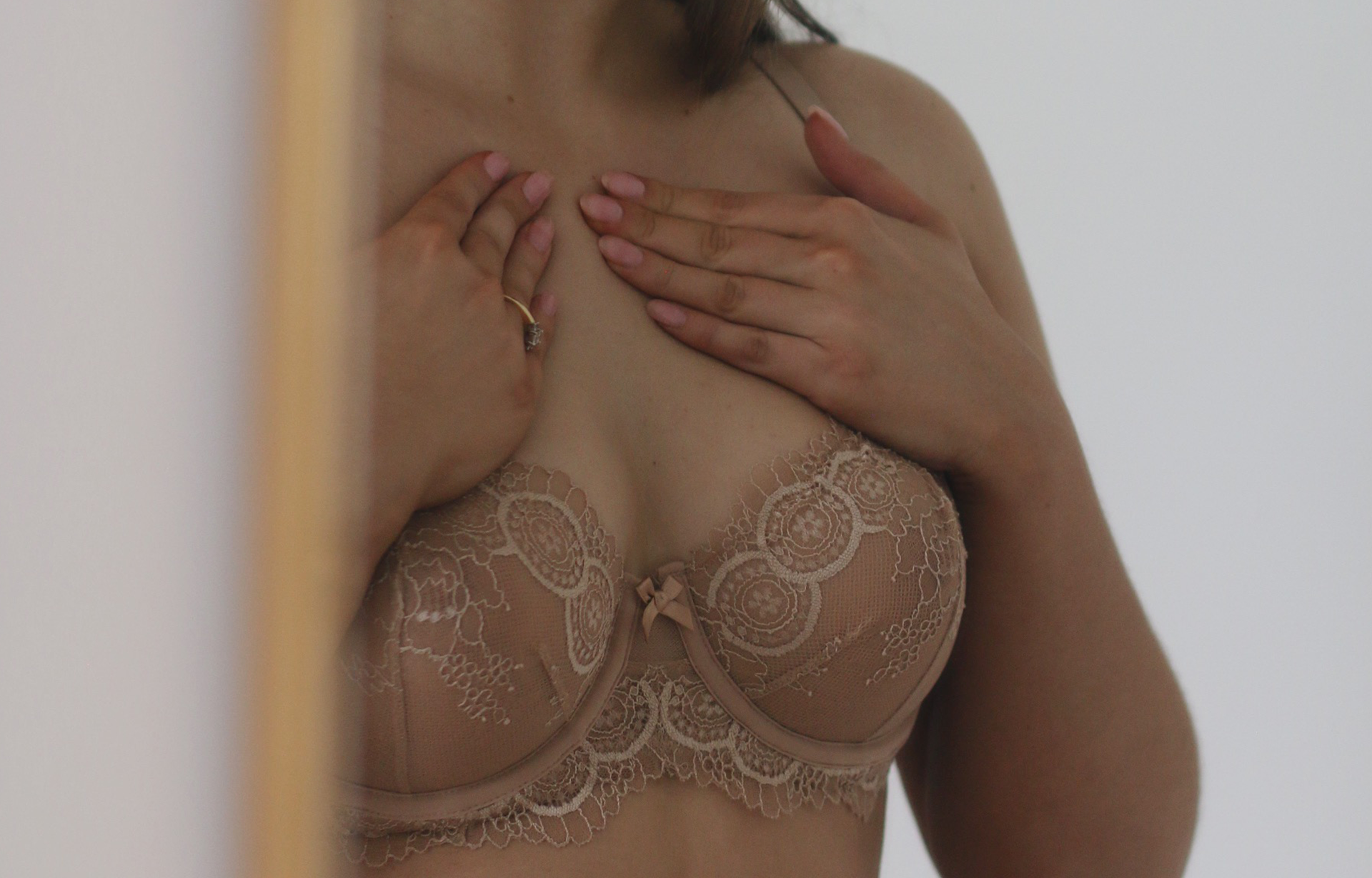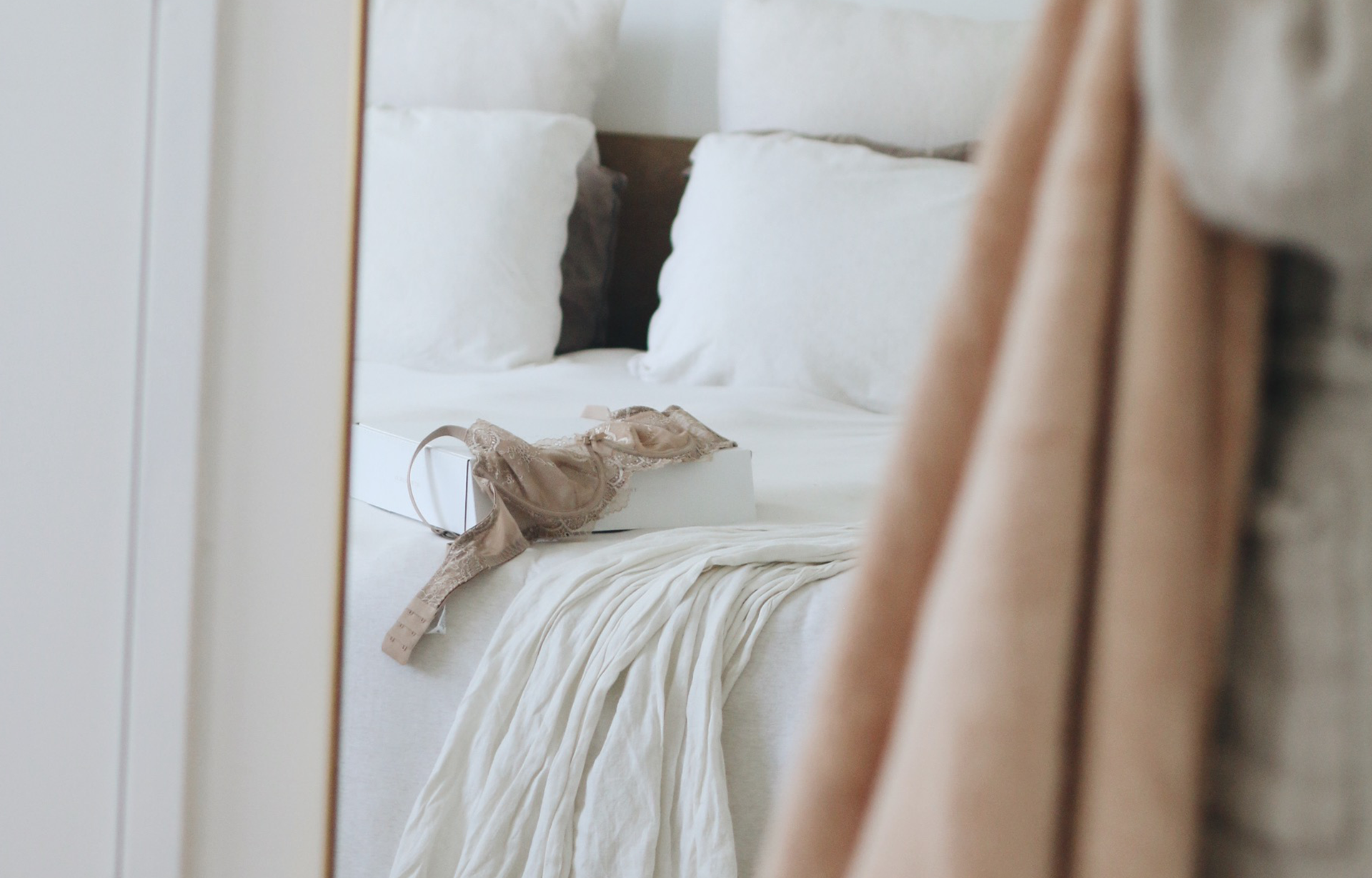Be Breast Aware
Early detection is the best weapon in the fight against breast cancer, which is why every Intimo bra comes with step-by-step guide on how to conduct your own self-checks. We are proud to have donated over $48,000 for our partner charities in support of prevention research.

EARLY DETECTION IS THE BEST WEAPON
Early detection is our best weapon in the fight against breast cancer, which is why taking just 5 minutes out of your day each month to complete your own breast check – and encouraging others to do the same - is significant both for your own personal health as well as the awareness and advocacy of breast health in the overall community.
A VISIBLE REMINDER
Our dedication to breast health awareness extends throughout the year, with each Intimo bra coming with a step-by-step guide on how to conduct your own self-checks, offering a valuable visual that you can stick to your mirror in a reminder to Be Breast Aware. Since 2014, over 1,300,000 Intimo bras have been produced with this breast check card attached, continually reminding women of the necessity of regular breast examinations.
TLC: THE TOUCH, LOOK, CHECK METHOD
Conducting your own monthly breast check is easy with the New Zealand Breast Cancer Foundation’s Touch, Look, Check method; simply follow the three steps and consult your doctor should you discover any irregularities.
STEP ONE
Raise one hand above your head. With the flat of your fingers press into your breast, feeling for any changes, softly at first and then more firmly. Check the entire breast area, from your collarbone to under your breast, and from the side of your breast up into your armpit. Repeat on the other breast.
STEP TWO
With your hands on your hips, look at your breasts in a mirror for their shape, colour and size. Then raise your arms above your head and check underneath the breast. Look for signs; skin changes, change in shape, new nipple inversion, dimpling on the skin or crusting on the nipple. Be aware of any discharge coming from the nipple (without squeezing).
STEP THREE
It can be scary to find a change that doesn’t feel or look normal, but it’s important to get any concerning signs checked out by your GP, even if you’ve had a mammogram recently. Most breast changes aren’t caused by cancer but check with your doctor to be sure.
FAQ's
A breast check is simple and can be done in just a few minutes. It involves studying your breasts in a mirror from various angles so you are familiar with their regular appearance, and using your fingertips to get a sense of what your unique tissue feels like.
- Look for a change in the appearance of your breasts in the mirror.
- Raise your arms and look for a change in the shape of your breasts.
- Feel for lumps in the breast, nipple and armpit area.
Signs to look for: A new breast lump or lumpiness, changes in breast shape or size, redness or dimpling of skin, ongoing breast pain, nipple discharge, crusting, ulcers, redness or inversion.
In Australia, 1 in 8 women develops breast cancer in their lifetime. In New Zealand, it is 1 in 9. More than 60% of breast cancer cases occur in women between 40 and 69 years old.
For Australian women, there is a 90% of survival 5 years after diagnosis. This is a great improvement. 90 out of 100 women diagnosed still live 5 years after diagnosis; where in 1994, it was 76 out of 100.
Men are far less likely to get breast cancer, even though all males have breast tissue and the disease itself would be the same. In Australia and New Zealand, less than 1% of cases are attributed to breast cancer in men.
A week after your period has ended is the best time. Pre-period isn’t ideal as your breast tissue undergoes cyclical changes like tenderness and increased lumpiness. This state is not indicative of what you normally feel like, so it is important you check your breasts at the right time.
As age is the biggest risk factor in developing breast cancer, the BreastScreen Australia Program notifies women aged 50-74 via the post every 2 years about accessing free screening mammograms.
If you’re 40-49 or over 75, you can still make use of the free mammograms; you just won’t get a reminder letter.
Women under 40 are not encouraged to get mammograms. This is because younger women’s tissue is denser due to the hormonal influx. Dense tissue shows up as white on a mammogram, as does tissue affected with breast cancer. As a woman ages and the breast tissue softens, potential breast cancer is easier to detect against a darker background.
‘Normal’ is different for everyone. It is completely normal for a woman’s breasts to differ slightly in size, shape and position. Light pain is very common, often harmless and easily treated with medication. So are benign cysts and tissue that is naturally more lumpy or denser than others.
Tenderness and increased breast size before a period is normal, too. Contraception can also increase breast pain. The important thing is to get familiar early on with what your breasts look and feel like at different times of your cycle, so you can spot any changes more effectively.
While the causes of breast cancer are still unknown, common risk factors include: ageing, family history, inherited genetic mutation like BRCA 1 or BRCA 2, exposure to female hormones (natural and administered), lack of exercise and poor diet, obesity and excessive alcohol consumption.
Common symptoms of breast cancer can include thickening breast or underarm tissue, new lumps, sore nipples or nipples that start to invert and product discharge, dimpling or puckering breast skin, rash or swelling and redness on the breasts. It is important to note that pain is a rare symptom of breast cancer.
All information gathered from accredited bodies; the National Breast Cancer Foundation, Cancer Council Australia and the New Zealand Breast Cancer Foundation.
Please note: the information on this page is intended purely as a guide, not to replace qualified medical advice. Your first source of medical knowledge and help should always be your doctor. See your GP if you have any concerns.
Some helpful material can be found on these sites:
AUSTRALIAN BREAST CANCER RESEARCH
NATIONAL BREAST CANCER FOUNDATION
